|
AirAsia has reported that its airlines in Indonesia,
Malaysia, Philippines and Thailand carried a combined total of
23 million passengers in 2020. By December, the four AOCs had recovered close to
60% of pre-COVID19 domestic capacity.
AirAsia Malaysia closed the fourth quarter with
834,934 passengers carried on a 72% load factor, despite the
setback in October and November given the reimplementation of
interstate travel restrictions. Following the easing of
restrictions in December, strong pent-up demand positively
translated into an immediate pick up in domestic travel.
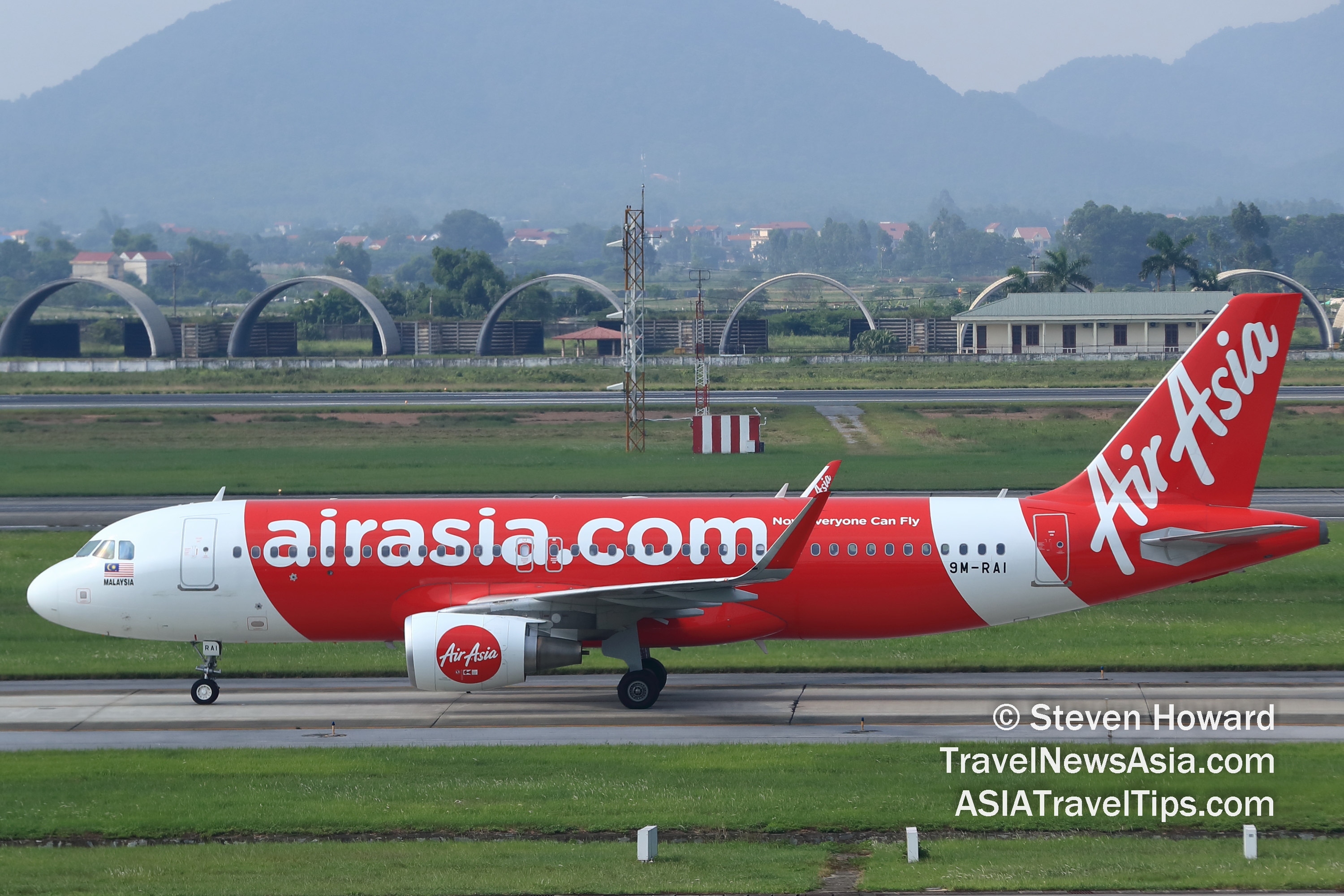
AirAsia Indonesia posted a strong rebound in Q4
2020, as the number of passengers carried more than quintupled
quarter-on-quarter to 389,283 passengers, while load factor
improved to 59%, up 10 percentage points from Q3 2020 as more
flights resumed and travel restrictions eased. In December,
AirAsia Indonesia more than tripled its operating capacity
compared to November to match demand recovery. Operations remained
primarily domestic, with domestic running at 93% of pre-COVID
capacity in December. The group has said that it "is encouraged by
the strong rebound in demand and expects AirAsia Indonesia to
fully recover to its pre-COVID19 domestic capacity in Q1 2021."
AirAsia Philippines carried 117,948 passengers in
Q4 2020 and reported a load factor of 64%. On a month-to-month
basis, AirAsia Philippines� number of passengers carried doubled
while domestic operating capacity increased by 5 points to 13% in
December when compared to September.
AirAsia Thailand�s performance further gained
momentum in Q4 2020, riding on strong domestic travel demand from
the festive season and travel incentives from the government.
AirAsia Thailand�s Q4 operations exceeded expectations as it
surpassed its pre-COVID19 domestic capacity by 7%. In December
2020, AirAsia Thailand operated 116% of pre-COVID19 domestic
capacity, as compared to 96% in September 2020. AirAsia Thailand
utilised 70% of its fleet by the end of December. More than 2.8
million passengers were carried during the quarter, an increase of
50% quarter-on-quarter, resulting in a load factor of 74%.
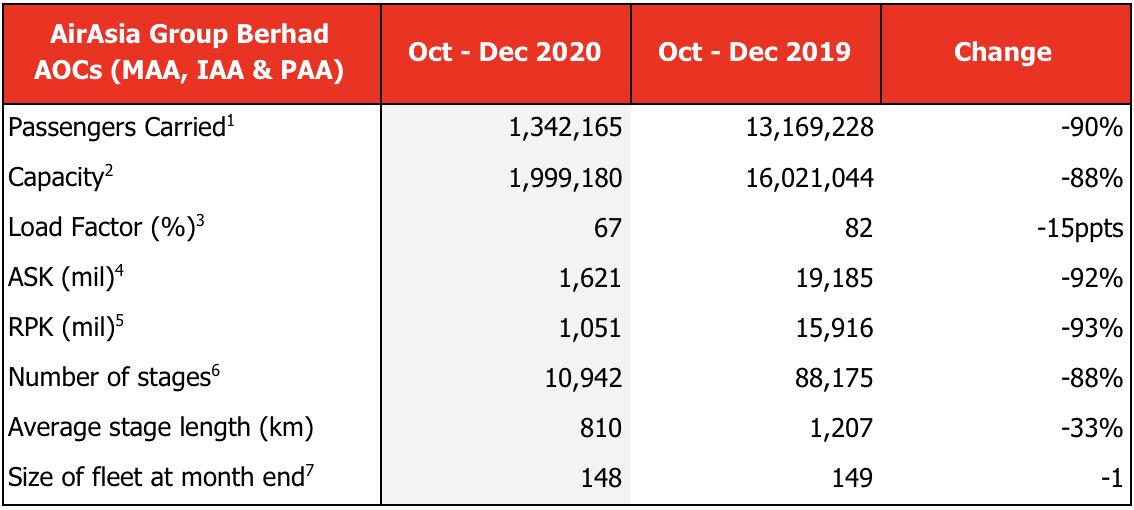
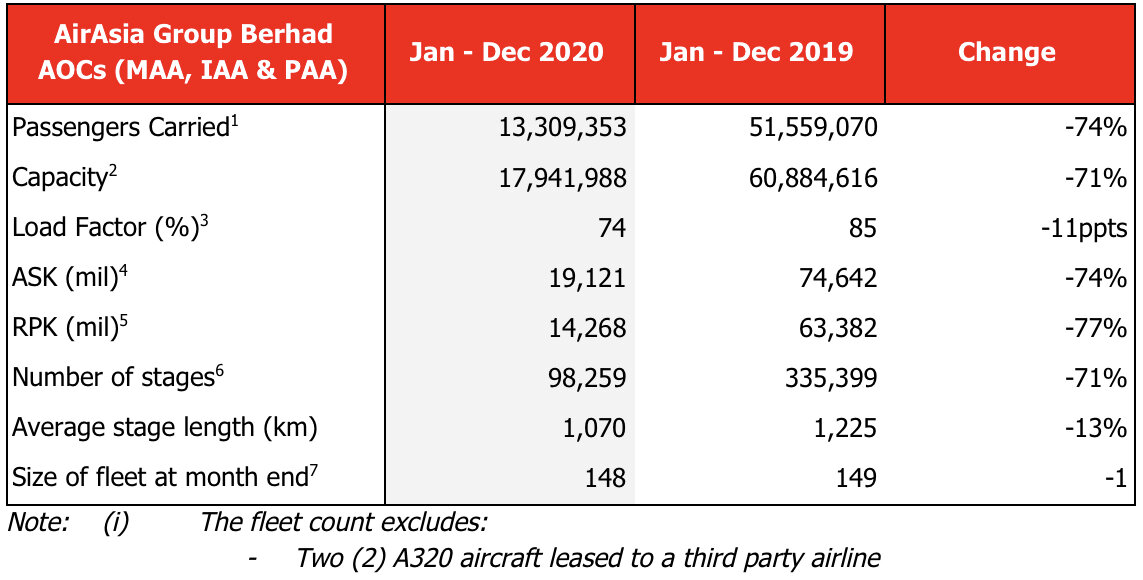
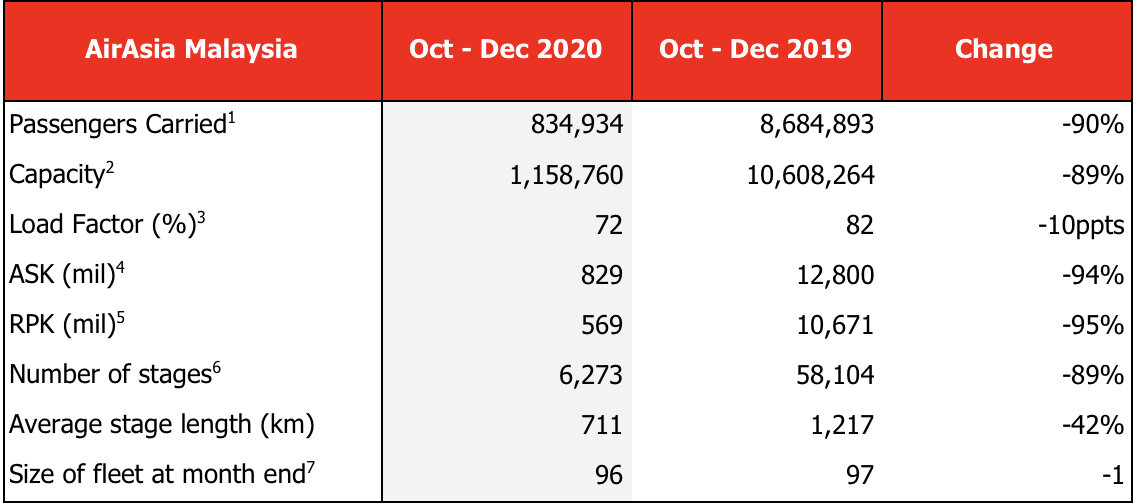
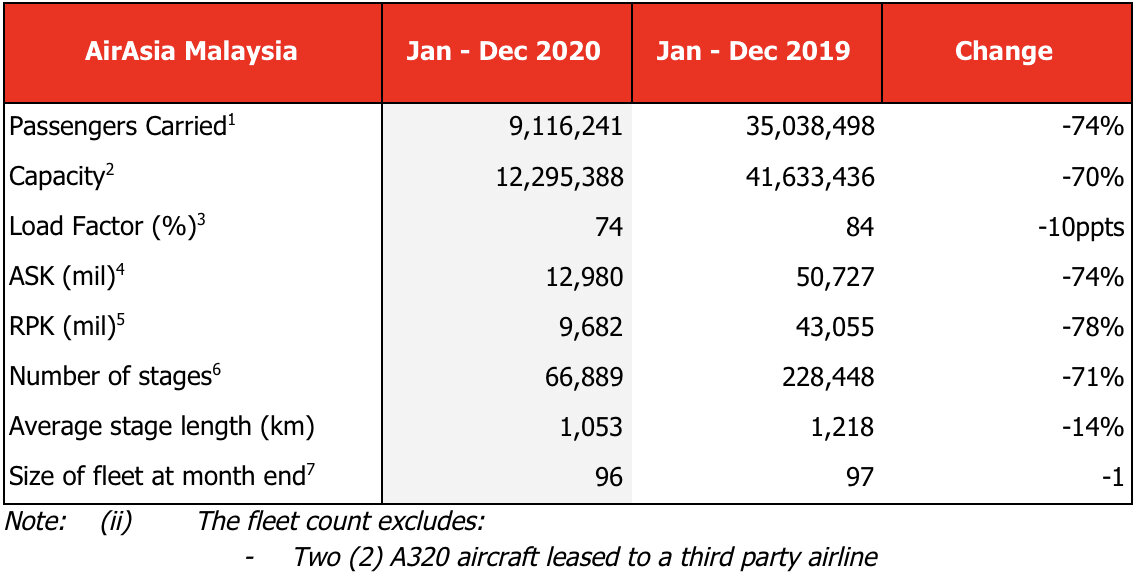
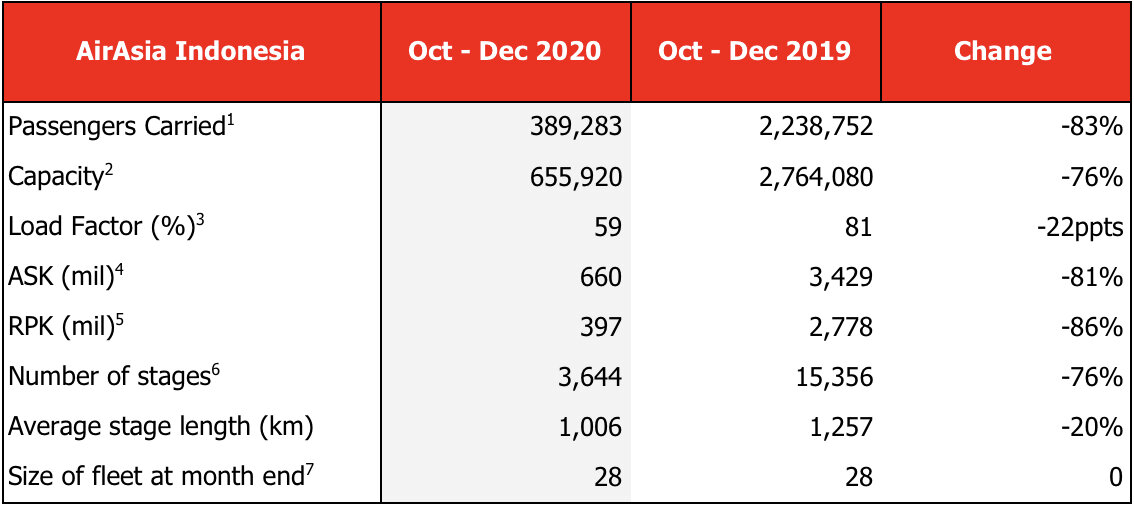
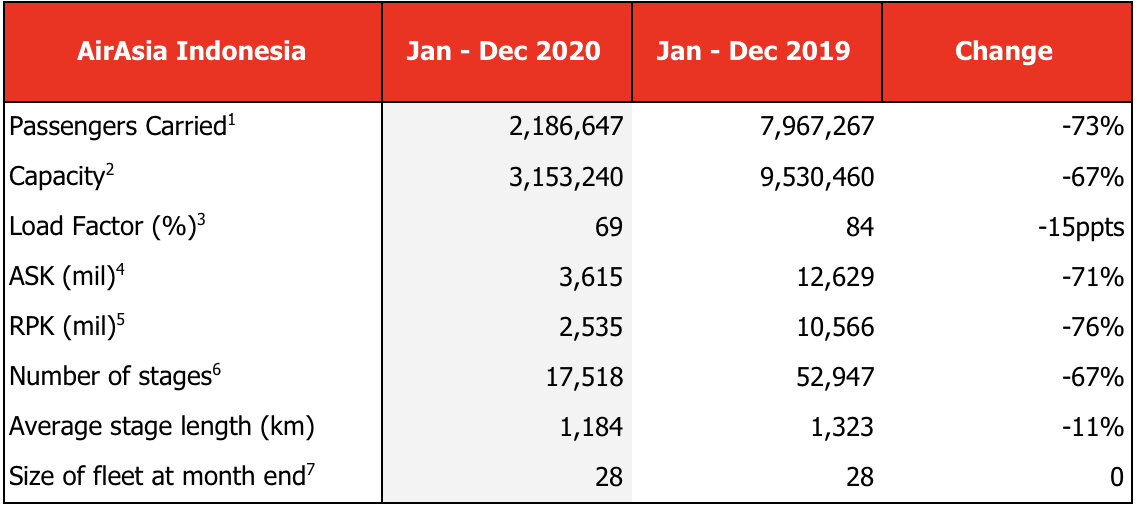
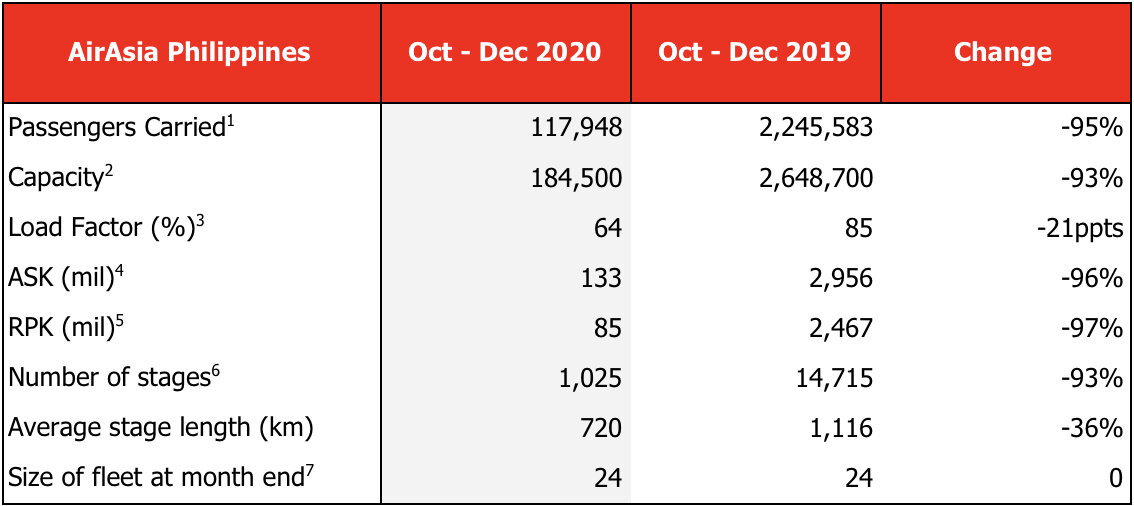
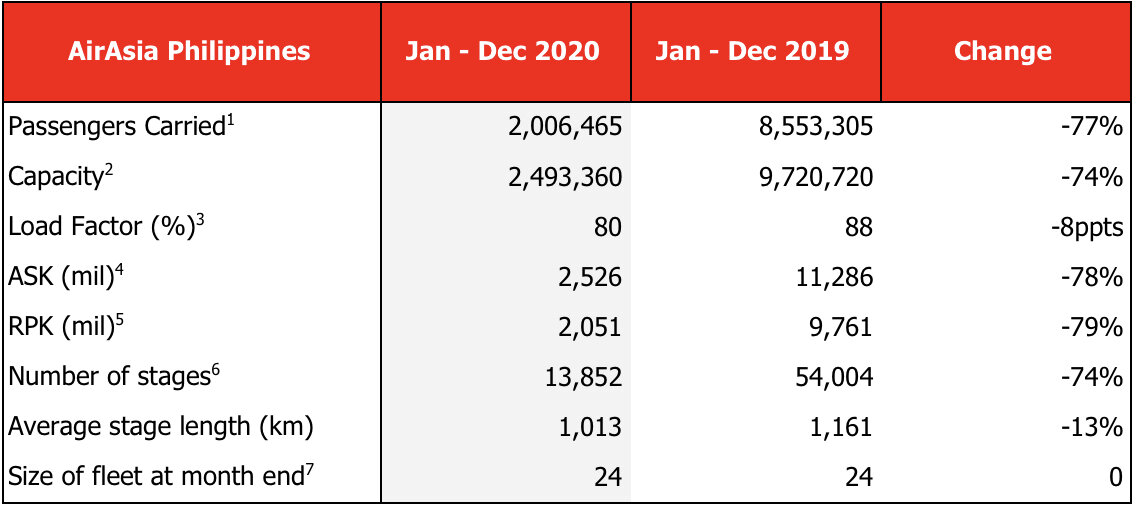
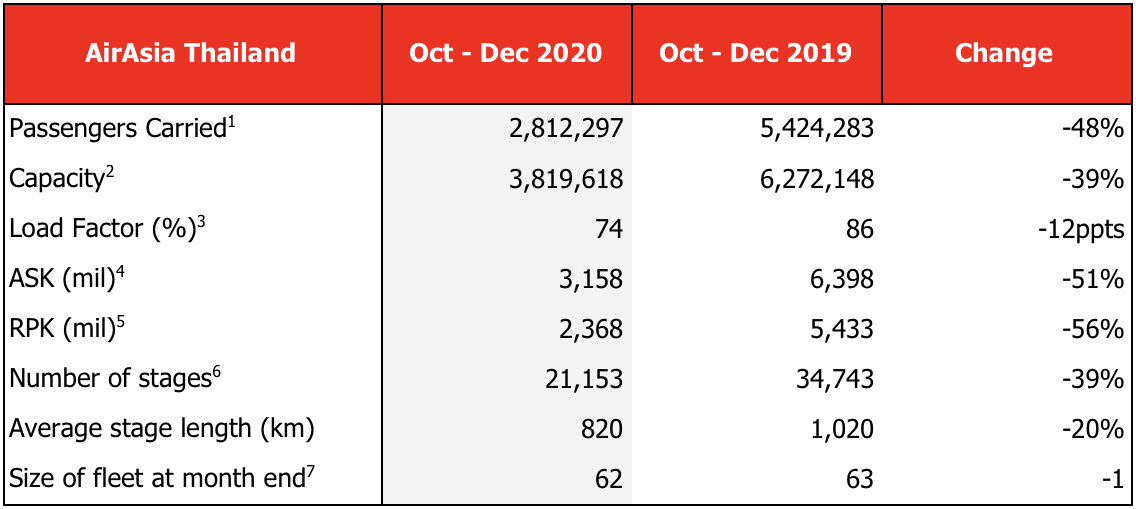
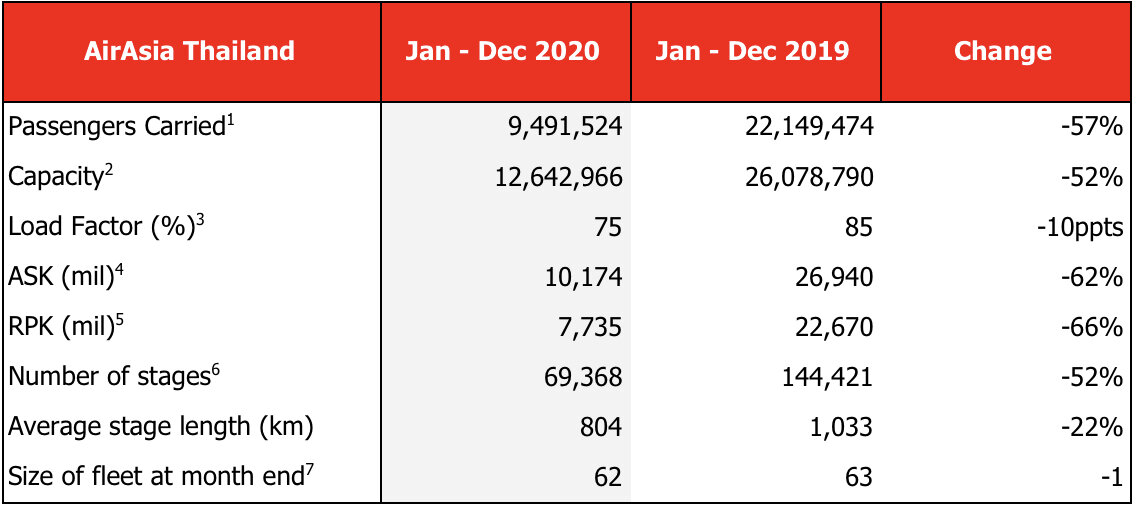
1) Number of earned seats flown. Earned seats
comprise seats sold to passengers (including no-shows).
2) Number of seats flown.
3) Number of Passengers Carried as a percentage of
Capacity.
4) Available Seat Kilometres (ASK) measures an
airline�s passenger capacity. Total seats flown multiplied by the
number of kilometres flown.
5) Revenue Passenger Kilometres (RPK) is a measure
of the volume of passengers carried by the airline. Number of
passengers multiplied by the number of kilometres these passengers
have flown.
6) Number of flights flown.
7) Number of aircraft including spares.
See latest
Travel Industry News,
Video
Interviews,
Podcasts
and other
news regarding:
COVID19,
AirAsia,
Indonesia,
Malaysia,
Philippines,
Thailand.
|
Headlines: |
|
|
